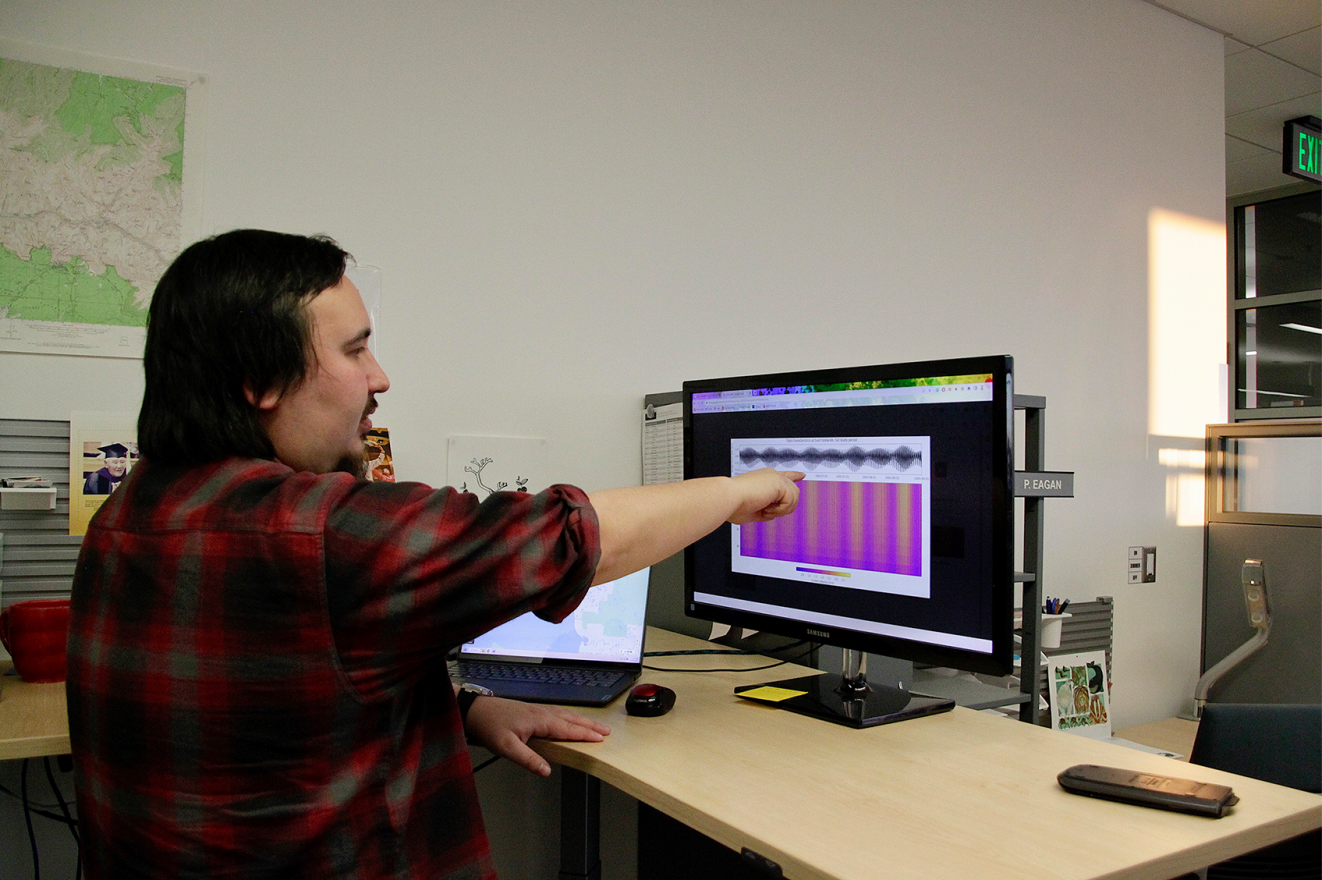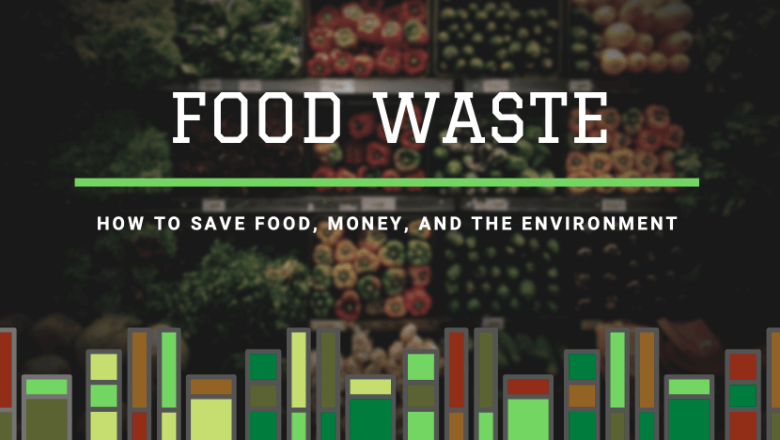
From ocean to ozone: Earth's nine life-support systems By Fred Pearce
Up to now, the Earth has been very kind to us. Most of our achievements in the past 10,000 years - farming, culture, cities, industrialisation and the raising of our numbers from a million or so to almost 7 billion - happened during an unusually benign period when Earth's natural regulatory systems kept everything from the climate to the supply of fresh water inside narrow, comfortable boundaries. This balmy springtime for humanity is known as the Holocene. But we are now in a new era, the Anthropocene, defined by human domination of the key systems that maintain the conditions of the planet. We have grabbed the controls of spaceship Earth, but in our reckless desire to "boldly go", we may have forgotten the importance of maintaining its life-support systems. The demands of nearly 7 billion humans are stretching Earth to breaking point. We know about climate change, but what about other threats? To what extent do pollution, acidifying oceans, mass extinctions, dead zones in the sea and other environmental problems really matter? We can't keep stressing these systems indefinitely, but at what point will they bite back? Last year, Johan Rockström, director of the Stockholm Environment Institute in Sweden, sat down with a team of 28 luminaries from environmental and earth-systems science to answer those questions. The team included Nobel laureate Paul Crutzen, NASA climate scientist James Hansen, Gaia researcher and "tipping point" specialist Tim Lenton, and the German chancellor's chief climate adviser Hans Joachim Schellnhuber. They identified nine "planetary life-support systems" that are vital for human survival. They then quantified how far we have pushed them already, and estimated how much further we can go without threatening our own survival. Beyond certain boundaries, they warned, we risk causing "irreversible and abrupt environmental change" that could make the Earth a much less hospitable place (Ecology and Society, vol 14, p 32). The boundaries, Rockström stresses, are "rough, first estimates only, surrounded by large uncertainties and knowledge gaps". They also interact with one another in complex and poorly understood ways. But he says the concept of boundaries is an advance on the usual approach taken by environmentalists, who simply aim to minimise all human impacts on the planet. Instead, he says, boundaries give us some breathing space. They define a "safe space for human development". And here they are.
1.Acid oceans
More carbon dioxide in the atmosphere means more is absorbed by the oceans, creating carbonic acid – bad news for animals with shells.
Boundary: Global average aragonite "saturation ratio" no lower than 2.75:1
Pre-industrial level: 3.44:1
Current level: 2.90:1

Diagnosis: Safe for now, but some oceans will cross the threshold by mid-century
This is a relatively new issue, rarely discussed until 10 years ago. More carbon dioxide in the atmosphere means more is absorbed by the oceans, creating carbonic acid. Since the industrial revolution, the pH of the ocean surface has fallen from 8.16 to 8.05, equivalent to a 30 per cent increase in the concentration of hydrogen ions.
Acidification per se isn't a problem, but it has serious knock-on effects on other aspects of ocean chemistry. The most important of these is that it lowers the amount of calcium carbonate dissolved in surface waters.
This doesn't matter much right now. But a critical point will be reached if waters become too low in aragonite, a form of calcium carbonate used by many organisms, including corals, to build their shells. Below a certain threshold, aragonite shells and coral dissolve in seawater.
So far, the average aragonite "saturation ratio" in the oceans has fallen from a pre-industrial level of 3.44:1 to 2.9:1. That means, on average, that there is still almost three times as much aragonite as is necessary to keep shells from dissolving. There are wide regional variations, however, and recent studies suggest parts of the Arctic and Southern Oceans could drop below the crucial aragonite saturation ratio of 1:1 by 2050.
Nobody knows quite what would happen then. Some species might be eaten away by the acidic water. It could be the coup de grâce for many corals already poisoned by pollution and bleached by warming waters. Emptier oceans would be able to absorb less CO2, accelerating global warming. To prevent any ocean waters from entering this parlous state, Rockström proposes keeping the average global aragonite saturation ratio above 2.75:1. That would mean keeping atmospheric CO2 levels below about 430 parts per million, which is lower than the 450 ppm that scientists say is the safe upper limit for global warming.
2.Ozone depletion
With most of the culprit chemicals now banned, the worst of the danger has passed – but it has not entirely vanished.
Boundary: Average concentration of stratospheric ozone no lower than 276 Dobson units
Current level: 283 Dobson units

Diagnosis: Safe, and improving
The ozone hole that formed in the stratosphere over Antarctica in the 1970s was a classic example of an environmental tipping point. Ozone-destroying chemicals built up in the frigid stratosphere until they abruptly - and unexpectedly - caused the ozone layer over the Antarctic to shift into a new state, with ozone all but absent in the spring. Nobody saw it coming, as nobody understood at the time that the chemistry of polar stratospheric clouds makes ozone-destroying chemicals more potent, leading to runaway ozone destruction.
The world acted quickly to heal the hole. With most of the culprit chemicals now banned, the worst of the danger has passed.
It is not over entirely, however. One concern is global warming. Trapping more heat close to the Earth's surface leaves the stratosphere colder. This means that the Arctic stratosphere could get cold enough in coming years for the remaining ozone-eating chemicals in the atmosphere to open up an ozone hole over the northern continents.
Away from the poles we look safe, unless there is some unknown quirk of atmospheric chemistry waiting to trip us up. Rockström and Paul Crutzen of the Potsdam Institute for Climate Impact Research in Germany - who won his Nobel prize for ozone-layer chemistry - recommend preventing stratospheric ozone concentrations outside the polar regions from falling by more than 5 per cent, or below a global average of 276 Dobson units (a measurement of the density of stratospheric ozone). With the concentrations of ozone-eaters still falling, it seems likely that we will stay within this planetary boundary.
3.Fresh water
A quarter of the world's river systems no longer reach the ocean for at least part of the year. This is drying out swathes of the landscape.
Boundary: No more than 4000 cubic kilometres of fresh water consumed per year
Current level: 2600 cubic kilometres per year

Diagnosis: Boundary will be approached by mid-century
Humans now control most of the world's rivers, damming and diverting many of them to death. Thanks to us, a quarter of the world's river systems no longer reach the ocean for at least part of the year. This is drying out swathes of the landscape, emptying wetlands and destroying fisheries.
Excess water use threatens humans in three ways: shortage of drinking water, loss of irrigation for agriculture, and changes in climate. Over the past 50 years, dams on rivers in central Asia have dried up the Aral Sea. Without the influence of the sea on climate, the entire region has become hotter in summer, colder in winter and more arid all year.
Meanwhile, as rivers run dry, we are pumping out ever more of the underground reserves held in the pores of rocks, many of them fossil reserves that will never be replaced by the rains. And we are disrupting other parts of the hydrological cycle by draining wetlands and razing forests. Deforestation of the Amazon will reduce evaporation rates in the tropical Americas, potentially changing weather patterns in the northern hemisphere, including the Asian monsoon.
Rockström, who is a hydrologist, suggests that preventing regional water crises from disrupting our global life-support systems will require limiting the consumption of river water to around 4000 cubic kilometres per year. That is roughly one-third of the flow down accessible rivers, excluding remote untamed rivers in rainforests and the Arctic. We have a way to go before we hit that limit. Current use is about 2600 cubic kilometres. But the excess is "largely committed already" for irrigating the crops needed to feed the growing world population, says Rockström. To keep within the boundary while feeding the world, we might have to curb irrigation of non-food crops like cotton or biofuels.
4.Biodiversity
Individual species may not matter much on their own, but collectively they form ecosystems that provide a range of vital "ecosystem services".
Boundary: Annual species extinction rate no more than 10 per million per year
Current level: At least 100 per million per year

Diagnosis: Boundary far exceeded
Humans are driving species to extinction by ploughing up or paving over their habitats, by introducing alien species like rats and weeds, by poisoning them with pollution, by hunting them for food and, increasingly, by changing the climate. Individual species may not matter much on their own, but collectively they form ecosystems that provide a range of vital "ecosystem services", such as recycling waste, cleaning water, absorbing carbon and maintaining the chemistry of the oceans.
Although we know that high levels of biodiversity are essential to healthy ecosystems, it is not yet clear how much can be lost before ecosystems collapse, nor which species are the key players in a given ecosystem. So Rockström's team settled on crude extinction rates as the best "interim indicator" of the state of ecosystems. They put the current extinction rate at more than 100 extinctions per million species per year, and rising. That compares with a natural "background" extinction rate of around 0.3. Up to 30 per cent of all mammal, bird and amphibian species will be threatened with extinction this century.
This cannot go on safely. Current rates may even mirror those of the "big five" mass extinctions of the past half-billion years, including the meteorite strike that did for the dinosaurs. While the world carried on after those events, it was massively transformed. To avoid a repeat, they suggest a safe long-term annual extinction rate of no more than 10 per million species per year. By that measure, they say, "humanity has already entered deep into a danger zone... if the current extinction rate is sustained".
5.Nitrogen and phosphorus cycles
We fix around 121 million tonnes of nitrogen a year, far more than nature does – and nature cannot cope.
Boundary 1: No more than 35 million tonnes of nitrogen fixed from the atmosphere per year
Current level: 121 million tonnes per year
Diagnosis: Boundary far exceeded and effects worsening
Boundary 2: No more than 11 million tonnes of phosphorus to flow into the oceans per year
Current level: 9 million tonnes per year

Diagnosis: Boundary not yet exceeded
Nitrogen is an essential component of all living things, yet only a small amount of the planet's stock of nitrogen is in a form that living things can absorb. This is "fixed" out of the air by bacteria in a range of leguminous plants. But you can have too much of a good thing. So other microbes "denitrify" ecosystems, converting the element back into forms not available for living things. This is the nitrogen cycle.
Farmers have always interfered with the cycle, because nitrogen availability often limits the fertility of soils. They have boosted production by planting more leguminous crops, like clover.
Then, a century ago, the nitrogen cycle changed forever when Fritz Haber, a German chemist, invented an industrial process for fixing nitrogen from the atmosphere to make chemical fertiliser. Today, 80 million tonnes of nitrogen is fixed from the atmosphere in this way each year and poured onto the world's fields.
But farming inefficiencies mean that most of this nitrogen runs off the land into rivers and oceans. Much of the nitrogen that does get into crops is later excreted by humans into sewers. We further fix nitrogen by cultivating legumes and burning fossil fuels, timber and crops. Put all that together, and we fix around 121 million tonnes of nitrogen a year, far more than nature does - and nature cannot cope.
The excess nitrogen is acidifying soils, killing vulnerable species and saturating ecosystems so that they lose the ability to recycle the nitrogen back into the air. Meanwhile, some over-fertilised lakes and seas in heavily farmed regions fill with "blooms" of aquatic life which then die and decompose, sucking all the oxygen out of the water in the process. The legacy of such blooms is anoxic "dead zones". At the last count there were more than 400 such zones in the oceans, covering 250,000 square kilometres, including parts of the Gulf of Mexico, the Baltic Sea and waters between Japan and Korea.
Rockström tentatively sets the safe level for human additions to the nitrogen cycle at about 35 million tonnes a year, one-quarter of the current total. Reaching that figure while continuing to feed the world is, to say the least, a tough ask.
Phosphorus, also used as fertiliser, is potentially part of the same problem. Around 20 million tonnes of phosphorus is mined from rock deposits annually and about half of this ends up in the ocean - about eight times the natural influx - where it contributes to blooms and dead zones. Rockström's team estimates that we can add up to 11 million tonnes of phosphorus per year without serious repercussions.
6.Land use
Half the world's tropical rainforests are gone, and large areas of grasslands once open to wildlife are now fenced in for livestock.
Boundary: No more than 15 per cent of ice-free land to be used for crops
Current level: 12 per cent

Diagnosis: Boundary will be approached by mid-century
The spread of farming into natural ecosystems, especially tropical forests, continues apace. Half the world's tropical rainforests are gone and large areas of grasslands once open to wildlife are now fenced in for livestock ranching. According to Rockström, the expansion of agriculture is the major driver behind loss of ecosystem services and threatens to both exacerbate climate change and damage the freshwater cycle. Meanwhile, urban areas are spreading across more densely populated regions like east and south Asia, Europe and North America.
Rockström sets his land-use boundary at the conversion of no more than 15 per cent of global ice-free land to growing crops. But he says how safe that will prove depends a lot on how we use the land. Will biologically rich and hydrologically important ecosystems be protected? Will farms be allowed to empty rivers and fill the wider world with nitrogen? Will cities contain their pollution?
Currently we have converted around 12 per cent of ice-free land to farming - about 16 million square kilometres. The boundary will likely be reached in the next few decades. To avoid going beyond it will require, above all, concentrating farming more intensively in the most productive areas, while containing its wider impact.
7.Climate change
Every degree of warming caused directly by CO2 is amplified by feedback processes that could drive temperatures much higher.
Boundary: Atmospheric CO2 concentration no higher than 350 parts per million
Pre-industrial level: 280 ppm
Current level: 387 ppm

Diagnosis: Boundary exceeded
This is the big one. Voluminous historical evidence shows that carbon dioxide in the atmosphere is the planet's main thermostat, and that raising CO2 concentrations warms the planet. We have done that in spades by burning fossil fuels, raising atmospheric levels from a pre-industrial 280 parts per million to the current 387 ppm. Politicians still debate what a dangerous level might be, but Rockström's team, advised by James Hansen, director of NASA's Goddard Institute for Space Studies in New York, says we passed the danger threshold more than 20 years ago, when we exceeded 350 ppm.
Why choose 350 ppm? After all, we have passed that already, and we are still here. The answer is that we haven't yet experienced all the warming from that amount of CO2, not by a long chalk.
Every degree of warming caused directly by CO2 is amplified by feedback processes. Melting sea ice exposes dark ocean, which means that the planet absorbs more solar heat. Warmer temperatures increase evaporation and so raise atmospheric levels of water vapour, another potent greenhouse gas. These feedbacks are the basis for the IPCC's warning that a warming of 1 °C due to CO2 will escalate to around 3 °C.
It may get even worse. Some climate scientists, notably Hansen, argue that there are other "slow feedbacks". For example, warming will eventually destabilise natural reserves of CO2 and another greenhouse gas, methane, stored in soils and permafrost. If so, warming of 1 °C due to CO2 could eventually escalate to 6 °C.
This is far too much to handle, says Rockström. To keep the big polar ice sheets largely intact and prevent massive flooding will require limiting warming to just 2 °C. The widely-accepted target to achieve that is 450 ppm, but if the slow feedbacks are correct we will have to pull CO2 levels back under 350 ppm to reach that target.
The good news is that we may have a bit of time, because those long-term feedbacks will take a while to kick in fully. Probably.
8.Aerosol loading
We have more than doubled the global concentration of aerosols such as soot since pre-industrial times.
Boundary: Not yet identified

Diagnosis: Unknown
Human activity churns up the earth, creating dust, while burning coal, dung, forests and crop waste fills the atmosphere with soot, sulphates and other particles. We have more than doubled the global concentration of these aerosols since pre-industrial times. That haze influences the climate and is a threat to human health, so "aerosol loading" should be considered a potential planetary boundary.
The impacts are highly variable, though. Some aerosols, like sulphates, reflect solar radiation, causing cooling. Others, like soot, absorb and re-radiate it, causing warming. The global balance of these heating and cooling effects is unclear.
Aerosols also affect the climate in other ways. For example, the near-permanent brown haze across southern and eastern Asia is a subject of intense research as it appears to influence both the timing and the positioning of the monsoon.
Meanwhile, aerosols reduce crop yields by falling on fields, and also clog up human lungs, contributing to millions of deaths from lung and heart disease.
The damage from aerosols can be great, but their highly variable impacts left Rockström's team unable to put a number on safe limits.
9.Chemical pollution
There are approaching 100,000 different human-made chemical compounds in use around the world today, and many of them harm humans and wildlife.
Boundary: Not yet identified

Diagnosis: Unknown
There are approaching 100,000 different human-made chemical compounds in use around the world today, in millions of different products. Additional compounds are created as by-products of manufacturing.
Chemicals are mainly a worry because of their impact on the health of humans and wildlife. Among those of greatest concern are toxic heavy metals like lead, organic pollutants that accumulate in tissues, and radioactive compounds.
A handful of these are already controlled. For instance, the "dirty dozen" persistent organic pollutants - which include DDT, PCBs and dioxins - are controlled under the Stockholm Convention on Persistent Organic Compounds. But the impact of most others remains undiagnosed. And even apparently benign chemicals may combine to produce toxic effects greater than the sum of their individual effects.
One idea considered by Rockström's group is that autism and ADHD in children may result from the widespread exposure to low concentrations of cocktails of these chemicals in the environment, creating what they call "a silent pandemic of subtle neuro-developmental disorders in children, possibly on a global scale".
An all-encompassing "chemicals boundary" could be valuable. But, say the authors, it is too early to say how or where it should be set.
CONCLUSION
However you cut it, our life-support systems are not in good shape. Three of nine boundaries - climate change, biodiversity and nitrogen fixation - have been exceeded. We are fast approaching boundaries for the use of fresh water and land, and the ocean acidification boundary seems to be looming in some oceans. For two of the remaining three, we do not yet have the science to even guess where the boundaries are. That leaves one piece of good news. Having come close to destroying the ozone layer, exposing both ourselves and ecosystems to dangerous ultraviolet radiation, we have successfully stepped back from the brink. The ozone hole is gradually healing. That lifeline has been grabbed. At least it shows action is possible - and can be successful.
Article From : http://www.biologicaldiversity.org/news/center/articles/2010/new-scientist-02-24-2010.html
Pictures: From http://www.newscientist.com/special/ocean-to-ozone-earths-nine-life-support-systems
Thank you all the time.
Scott Lee
">




















